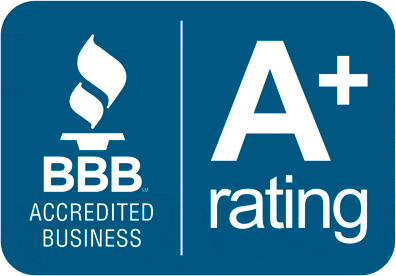Demolition and construction projects can be interesting chapters in the life of a building, paving the way for new structures and possibilities. However, they also leave behind a significant aftermath and that’s where we come in – providing quality construction debris removal.
The process of construction debris removal is not just about taking waste to a landfill. It’s a systematic, eco-friendly, and sometimes surprisingly creative endeavor. Let’s delve into the steps involved, from demolition to cleanup, and shed light on the importance of this often-overlooked phase.
Step 1: Planning and Selective Demolition
Before a single wall comes down or a bulldozer enters any construction site, thorough planning is essential. This involves selective demolition, where specific materials are earmarked for removal, recycling, or reuse. The goal here is to minimize waste and maximize resource recovery.
During this phase, we also plan removal logistics such as determining the equipment needed, the crew size, hauling routes and a timeline to coordinate efficient debris removal. We also will obtain any required permits for waste disposal from local authorities during this phase.
Step 2: Debris Segregation
As we move through the demolition process, the process of segregating the debris begins. This step is crucial for efficient construction waste management. Different materials require different disposal or recycling methods. For instance, metals, glass, and certain plastics are often recycled, while others may need special handling. In some cases, there may be hazardous waste, and this must be disposed of properly and in accordance with all local, state and federal guidelines.
Step 3: Recycling and Reusing
This is where eco-friendly practices come into play. Many materials from demolition sites can be recycled. Concrete can be crushed and reused in foundations or road bases. Metals can be melted down and remolded. Wood can find a new life in furniture or as biomass fuel. Even bricks can be cleaned and reused in new building projects.
Items that can be recycled or reused may include:
- Metals: Iron, steel, aluminum, and copper are easily recyclable.
- Concrete: Can be crushed and used in new construction projects.
- Wood: Can be reused in new constructions, or as biomass fuel.
- Bricks: Cleaned and reused in construction.
- Glass: Often recycled into new glass products.
- Plastics: Certain types can be recycled into new plastic products.
- Cardboard and Paper: Easily recycled into new paper products.
- Appliances: In some cases, older appliances (in good condition) and items such as sinks, toilets, etc. can be given away for reuse.
- Flooring Materials: Some types of flooring, such as linoleum can be recycled
Step 4: Junk Removal & Responsible Disposal
In a perfect world, every piece of construction debris could be used, and while we make every effort to recycle all we can, the reality is that some of the debris will head to the landfill. Post segregation, the materials labeled as ‘junk’ or non-reusable are removed from the site.
Junk removal is a significant part of construction debris removal. It involves hauling away materials that can’t be recycled or reused. This step is vital to clear the site and prepare it for the next phase of construction or renovation.
Despite our best efforts, not all materials can be recycled or reused. This is where responsible disposal comes into play. It involves transporting the remaining construction debris to a licensed landfill or waste management facility, ensuring adherence to environmental regulations and sustainability.
Step 5: Documentation
This step actually occurs throughout the entire process. We keep detailed logs of each load that is hauled away, noting the date and time, estimated volume, debris type, etc. We also keep documents such as receipts from disposal facilities, weight tickets and manifests from hazardous waste disposal. These are just a few tasks that make up this part of the process.
Why It’s More Than Just Disposal
The process of construction debris removal is not just about clearing away the rubble. It’s a meticulous process that involves selective demolition, segregation, junk removal, recycling, and responsible disposal.
Construction debris removal is a critical aspect of the construction and demolition process. It’s a multi-step journey that involves much more than just hauling waste to a landfill. Through selective demolition, responsible junk removal, and a focus on recycling and reuse, this process stands as an essential contributor to sustainable construction and environmental stewardship.
Contact U.S. Demo For Debris Removal & More!
Construction debris removal is just one of our areas of specialization. Our team of demolition contractors also provide many other helpful services as well, including:
- Concrete Demolition & Concrete Removal (Patios, Decks, Walkways, etc.)
- Driveway Removal (Concrete or Asphalt)
- House Demolition (including Mobile Home Demolition)
- Barn Demolition
- Garage demolition
- Selective Demolition
- Interior Demolition
- Pool Demolition
- Commercial Building Demolition
In addition to our demolition services, we also can serve as your excavation contractor for residential and commercial construction projects. We offer excavations for new foundations and utility lines as well as grading services, erosion control, complete site clearing and more. We’ve been leaders in safe and environmentally friendly demolition, excavation and debris removal for more than 20 years and we serve the entire San Francisco Bay Area.
Whether you need construction debris removal or another of our services, we encourage you to contact us at any time. Simply click on the Contact Us tab on our homepage and leave us a short message. A member of our team will contact you to gather information and provide you with a free cost estimate for our services.

